
Anushakti Nagar is the residential township of the Bhabha Atomic Research Center, Nuclear Power Corporation of India, Directorate of Construction Services and Estate Management, Atomic Energy Education Society in Mumbai, Maharashtra, India. Anu Shakti means atomic power in Sanskrit. Spread over more than 940 acres, this residential complex for the employees of Department of Atomic Energy of the Government of India in Mumbai, is situated in North-east Mumbai. Anushakti Nagar claims to be the largest scientific community in the world. It has the largest central library in the continent in Nuclear science and technology.
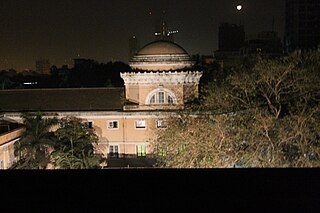
Veermata Jijabai Technological Institute (VJTI) is a state funded college located in Mumbai, Maharashtra, India, and one of the oldest engineering colleges in Asia. Founded in 1887 and formerly known as the Victoria Jubilee Technical Institute, it adopted its present name on 26 January 1997. VJTI is an academically and administratively autonomous institute, but it is affiliated to the University of Mumbai. The institute is financially supported by the Government of Maharashtra.

Rediff.com is an Indian news, information, entertainment and shopping web portal. It was founded in 1996. It is headquartered in Mumbai, with offices in Bangalore, New Delhi and New York City.
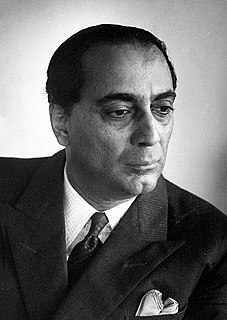
Homi Jehangir Bhabha, was an Indian nuclear physicist, founding director, and professor of physics at the Tata Institute of Fundamental Research (TIFR). Colloquially known as "Father of the Indian nuclear programme", Bhabha was also the founding director of the Atomic Energy Establishment, Trombay (AEET) which is now named the Bhabha Atomic Research Centre in his honour. TIFR and AEET were the cornerstone of Indian development of nuclear weapons which Bhabha also supervised as director.

Tata Institute of Fundamental Research (TIFR) is a public deemed research university located in Mumbai, India that is dedicated to basic research in mathematics and the sciences. It is a Deemed University and works under the umbrella of the Department of Atomic Energy of the Government of India. It is located at Navy Nagar, Colaba, Mumbai, with an affiliated campus in Serilingampally near Hyderabad. TIFR conducts research primarily in the natural sciences, mathematics, the biological sciences and theoretical computer science.
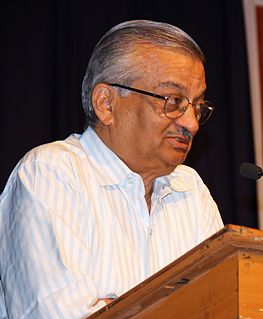
Anil Kakodkar is an Indian nuclear physicist and mechanical engineer. He was the chairman of the Atomic Energy Commission of India and the Secretary to the Government of India, he was the Director of the Bhabha Atomic Research Centre, Trombay from 1996–2000. He was awarded the Padma Vibhushan, India's second highest civilian honour, on 26 January 2009.

The Homi Bhabha National Institute (HBNI) is an Indian deemed university and central government engineering training institute for central government engineers of Indian Atomic Energy Engineering Service cadre established by the Department of Atomic Energy, which unifies academic programmes of several of its constituent institutions. Deemed universities in India have been divided in three categories by the Ministry of Human Resource Development (MHRD) and HBNI has been placed in category 'A', highest of the three categories. Homi Bhabha National Institute, Mumbai and its Constituent Units are the institutions of excellence as per section 4(b) of "The Central Education Institutions Act, 2006".

The Nuclear Power Corporation of India Limited (NPCIL) is an Indian public sector undertaking based in Mumbai, Maharashtra. It is wholly owned by the Government of India and is responsible for the generation of nuclear power for electricity. NPCIL is administered by the Department of Atomic Energy (DAE).

The Department of Atomic Energy (DAE) is a department with headquarters in Mumbai, Maharashtra, India. DAE was established in 1954 by a Presidential Order. DAE has been engaged in the development of nuclear power technology, applications of radiation technologies in the fields of agriculture, medicine, industry and basic research. DAE comprises five research centres, three industrial organisations, five public sector undertakings and three service organisations. It has under its aegis two boards for promoting and funding extramural research in nuclear and allied fields, mathematics and a national institute. It also supports eight institutes of international repute engaged in research in basic sciences, astronomy, astrophysics, cancer research and education. It also has in its fold an educational society that provides educational facilities for children of DAE employees. The important programmes of the DAE are directed towards:
Homi Nusserwanji Sethna was an Indian nuclear scientist and a chemical engineer, gaining international fame as the Chairman of the Atomic Energy Commission (India) during the time when the first nuclear test, codename Smiling Buddha in Pokhran Test Range in 1974 was conducted. He was the primary and central figure in India's civilian nuclear program as well as the construction of nuclear power plants. In 1991, he was appointed as Sheriff of Mumbai.
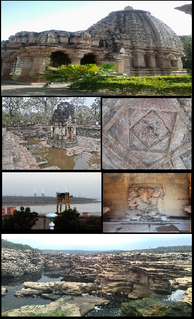
Rawatbhata is a city, Tehsil and Nagar Palika in Chittorgarh District, Rajasthan, India. It is 131 km from Chittorgarh city, 50 km from the nearest city, Kota. The city has eight nuclear power stations, an under-construction nuclear fuel complex, and a heavy water plant. Rawatbhata also has the biggest dam of Rajasthan, Rana Pratap Sagar Dam, which is built on the Chambal River. The dam is equipped with a 172 MW hydroelectric power station.

The Atomic Energy Central School is a chain of schools run by the AEES, Mumbai, India, had been developed for the children of employees of the Department of Atomic Energy (DAE), India. The school has 31 branches at 15 locations, consisting of kindergartens, primary schools, secondary schools and junior colleges.
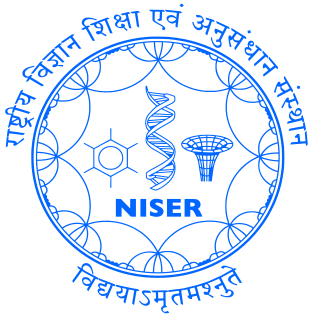
The National Institute of Science Education and Research (NISER) is an autonomous premier public research institute in Jatani, Odisha, India under the umbrella of Department of Atomic Energy, Govt. of India. The institute is a constituent institution of Homi Bhabha National Institute (HBNI). The prime minister, Manmohan Singh (2004–2014), laid the foundation stone on August 28, 2006, establishing the institute along the lines of the IISc in Bangalore, and its seven sister institutions, the IISERs, established at Kolkata, Pune, Mohali, Bhopal, Berhampur, Tirupati and Thiruvananthapuram in India.

Tarapur Atomic Power Station (T.A.P.S.) is located in Tarapur, Palghar, India. It was the first commercial nuclear power station built in India.
Nuclear power is the fifth-largest source of electricity in India after coal, gas, hydroelectricity and wind power. As of November 2020, India has 22 nuclear reactors in operation in 7 nuclear power plants, with a total installed capacity of 7,380 MW. Nuclear power produced a total of 43 TWh in 2020-21, contributing 3.11% of total power generation in India. 10 more reactors are under construction with a combined generation capacity of 8,000 MW.
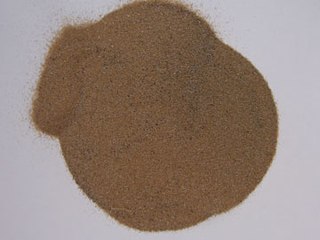
India's three-stage nuclear power programme was formulated by Homi Bhabha, the well-known physicist, in the 1950s to secure the country's long term energy independence, through the use of uranium and thorium reserves found in the monazite sands of coastal regions of South India. The ultimate focus of the programme is on enabling the thorium reserves of India to be utilised in meeting the country's energy requirements. Thorium is particularly attractive for India, as India has only around 1–2% of the global uranium reserves, but one of the largest shares of global thorium reserves at about 25% of the world's known thorium reserves. However, thorium is more difficult to use than uranium as a fuel because it requires breeding, and global uranium prices remain low enough that breeding is not cost effective.

IREL (India) Limited(Formally Indian Rare Earths Limited) is a government-owned corporation Mini-Ratna Category A, Schedule B Company, in India based in Mumbai. It was incorporated as a public limited company in 1950, jointly owned by the Government of India and Government of Travancore, Kochi with the primary intention of taking up commercial scale processing of Monazite. Government of India took control of IREL in 1963 under the administrative control of Department of Atomic Energy (DAE). It was incorporated with the primary intention of taking up commercial scale processing of monazite sand at its first unit namely Rare Earths Division (RED), Aluva, Kochi for the recovery of thorium.
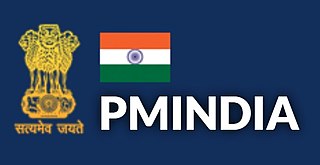
The Prime Minister's Office (PMO) consists of the immediate staff of the Prime Minister of India, as well as multiple levels of support staff reporting to the Prime Minister. The PMO is headed by the Principal Secretary, currently Pramod Kumar Misra. The PMO was originally called the Prime Minister's Secretariat until 1977, when it was renamed during the Morarji Desai ministry.
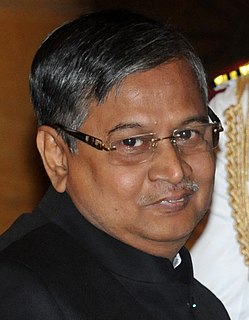
Sekhar Basu was an Indian nuclear scientist who served as the chairman of the Atomic Energy Commission and Secretary to the Government of India, Department of Atomic Energy (DAE). He also served as the Director of Bhabha Atomic Research Centre (BARC), the Project Director of Nuclear Submarine Program and later as the Chief Executive of the Nuclear Recycle Board at BARC. He was a recipient of India's fourth highest civilian honor Padma Shri in 2014.
Suhas Pandurang Sukhatme is an Indian scientist, teacher, author and a former Chairman of the Atomic Energy Regulatory Board of the Government of India, known for his expertise in heat transfer and energy technologies. He was honoured by the Government of India, in 2001, with the fourth highest Indian civilian award of Padma Shri.

















